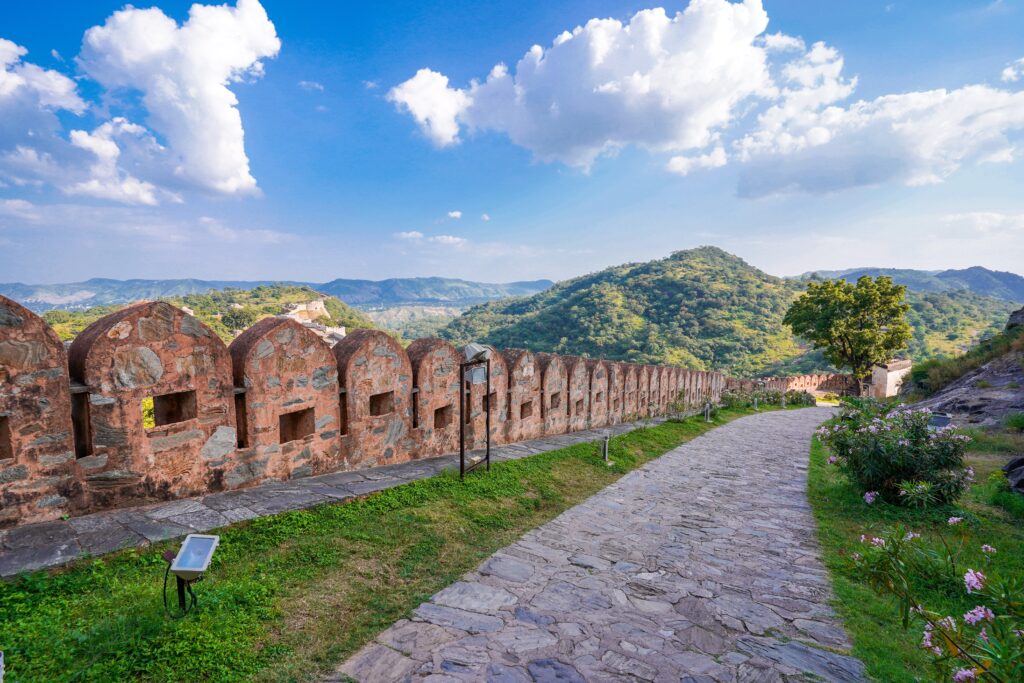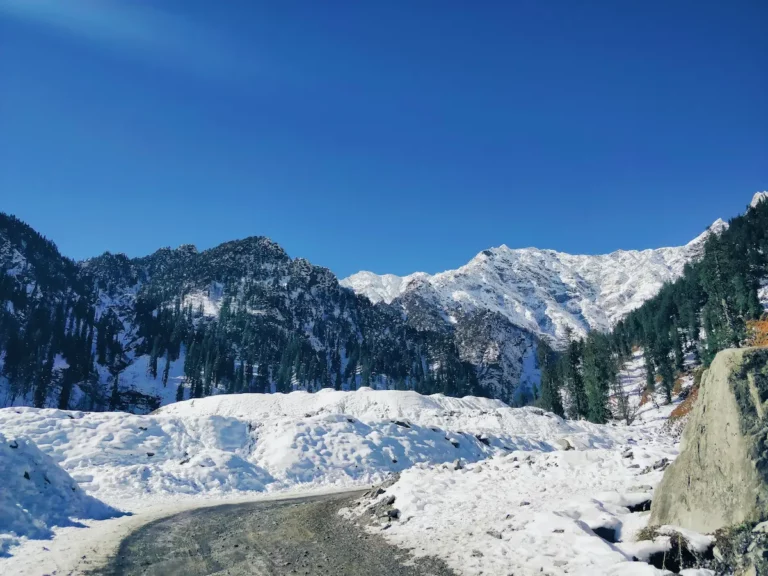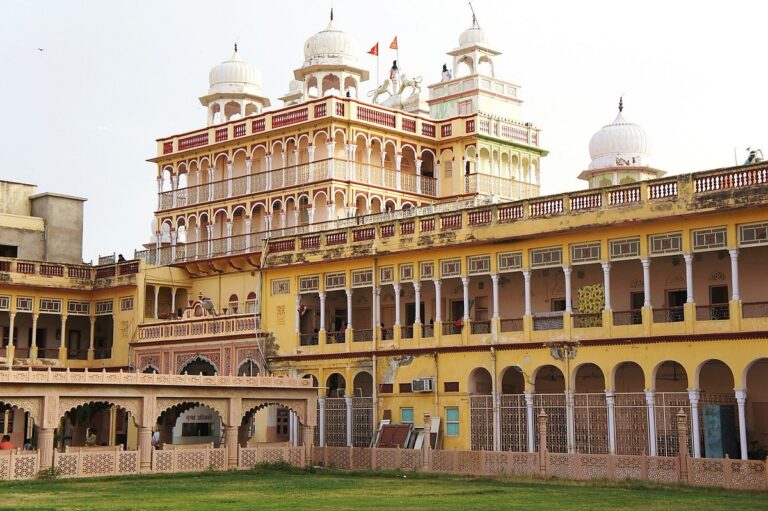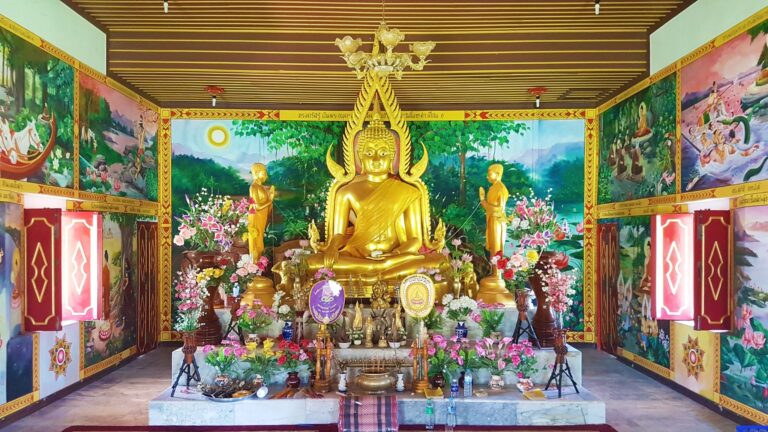Kumbhalgarh Fort History
It was expertly constructed over a 15-year period under the direction of Mandan, the renowned architect of Kumbhalgarh Fort in Rajasthan, and is precisely positioned between eleven peaks of the Aravalli hills. It is one of the most significant and perhaps the only impregnable forts in the state due to its strategic location on a high ridge hidden by the nearby peaks. It was only ever taken by the Mughal army through trickery when they tainted the fort’s water supply, never by combat. Kumbhalgarh Palace enjoys a particularly unique place in history and in the hearts of the Rajputs as the birthplace of the renowned Maharana Pratap.
Architecture and Layout
Even before you approach the massive Kumbhalgarh fort, which rises loftily above, the robust rounded bastions attract your attention. The fort’s thoughtful architectural design has turned it into an impregnable bastion of Rajput dominance. All possible entrances to the Kumbhalgarh fort are guarded by seven formidable gates known as Pols. As you go through the beautiful ramparts of the fort, which are allegedly broad enough for eight horses to march side by side, you can hear the whispers of history. The wall surrounding Kumbhalgarh Fort, India’s version of the Great Wall, is the second-longest wall in the world at 36 kilometres in length and 15 to 25 feet wide in various locations.

Archers could fire at the opposing troops through the powerful wall’s tapering gaps while being protected from their counterattack. The ramp inside the fort that ascends to the top of the hill features numerous hairpin curves that were purposefully designed to hinder the movement of the enemy army’s elephants and horses. Ingenious traps have also been devised in numerous locations to catch the opponent off guard. The Kumbhalgarh Fort height, which stands towering at an elevation of 1100 metres on the Aravalli range, also astounds everyone about this majestic fort.
Places to see inside the Kumbhalgarh Fort
In addition to the Kumbha Palace, Badal Mahal, and Maharana Pratap’s birthplace, the fort area is home to an astounding 360+ Brahmanical and Jain temples that dot the surrounding area. The temples are ornate, well carved constructions, unlike the main fort and walls, which are made of solid stone blocks that have withstood the test of time. The Neelkanth Mahadev Shrine, which is devoted to Lord Shiva, is the most significant and renowned temple. The temple is an unparalleled architectural achievement with its enormous round dome, the delicately carved roof above 24 pillars, the broad courtyard, and the 5-foot-tall lingam. Maharana Kumbha never started his day without praying to this god. It’s interesting to note that because of his height, the deity’s eyes were level with his own as he knelt to worship. The Parsvanath Jain temple, the Bawan Devi temple (where “baawan” refers to the 52 shrines found in the same complex), the Vedi temple, and the Ganesh temple are among the other notable temples. The Kumbha Palace is a two-story structure with a stunning blue durbar hall that was constructed in the traditional Rajput manner. The mardana (men’s) and zenana (women’s) palaces are divided by a corridor, as was customary. The Badal mahal, or Palace of Clouds, is the highest point of the fort and is accessible only after an arduous journey uphill. One of the fort’s most notable structures, built by Rana Fateh Singh, is designed in a straightforward yet striking architectural style. Beautiful paintings and friezes cover the palace walls. It provides sweeping views of the entire fort as well as the surroundings. The view from above during the monsoon season is breathtaking, with rolling hills and ravines visible for miles.
November through February in the winter are ideal. The rainy season, which runs from July to August, is especially wonderful since the scenery is beautifully green and the temperature is comfortable. For your perfect getaway, you can stay at Tree of Life Resort in Udaipur which has 16 hideaway rooms, set on four acres of serene land. They offer you a getaway of unmatched beauty and solace between the airport and the city.







